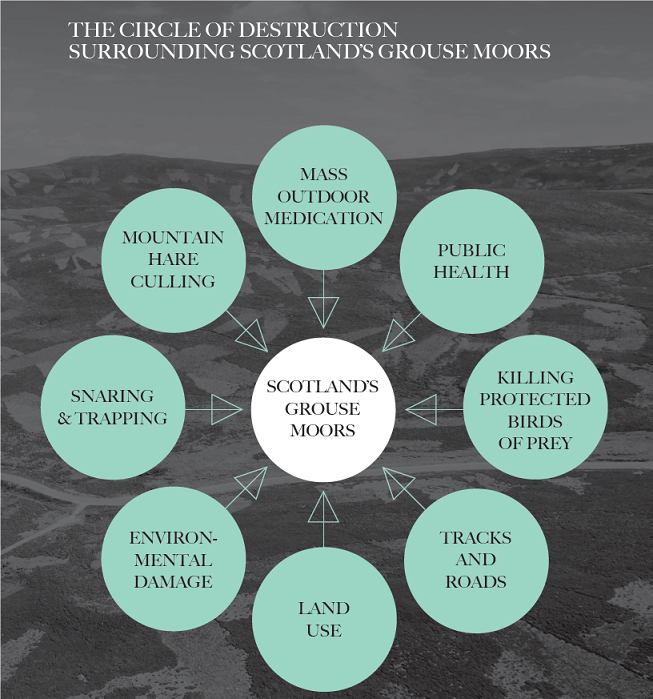
Last week Revive, the coalition for grouse moor reform, issued a new report Untold Suffering about how thousands of animals are killed and trapped on Scotland’s grouse moors. Its one of the scandals of our time that this slaughter takes place even in our National Parks which were set up to protect nature (see here). One of Revive’s great strengths is that it is committed to tackling the environmental destruction caused by intensive grouse moor management as a whole (see above) rather than dealing with issues separately as happened in the past. The report includes the welcome statement that:
“Unregulated hill tracks and fences are convenient for grouse moor managers but scar the hillsides”.
Parkswatch has regularly argued that the proliferation of hill tracks is not just a landscape issue but is central to understanding how wildlife is persecuted (see here). Vehicular use on grouse moors also causes significant damage to habitats, including peat bogs, and this has also been allowed to continue within the Cairngorms National Park, even in areas which are supposed to be most highly protected under the EU Habitats Directive. This post takes a further look at what is going on around Glen Banchor (see here for example).
The Gleann Ballach/Allt Fionndrigh ATV tracks
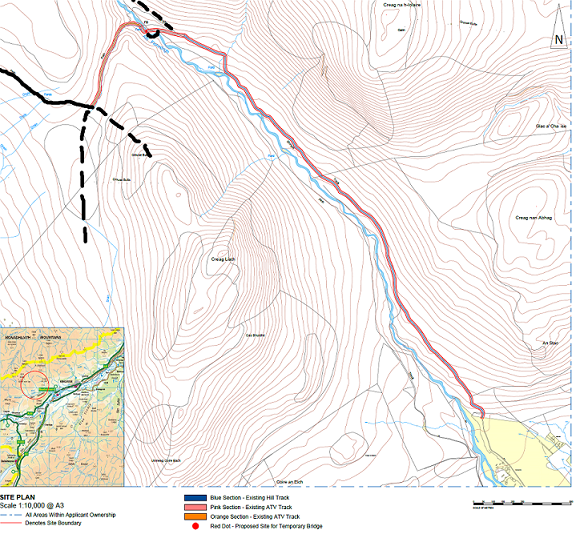
Just over a year ago the Glen Banchor/Pitmain estate, which appears owned by Abdul Majid Jafar the Chief Executive of Crescent Petroleum (see here), submitted a Prior Notification to Highland Council of its intention to extend the hill track which runs up the Allt Fionndrigh from Glen Banchor. That application, 18_04974, was then withdrawn. This was perhaps because the Prior Notification system is ONLY supposed to be used for agricultural and forestry tracks and, as the evidence below shows, this “track upgrade” was clearly intended to facilitate further intensive grouse moor management. The Prior Notification then disappeared completely from Highland Council’s Planning portal (but not before I had taken copies of the documentation).

The old hill road up by the Allt Fionndrigh is a good example of what hill roads should look like, if properly designed and situated. Its narrow, both sides are well vegetated and there is a vegetated strip down the middle. Only at the start, where it rises steeply out of Glen Banchor, and at the end, where it rises onto a moraine (see above) after entering the Monadhliath Wild Land Area, does it have any significant landscape impact.
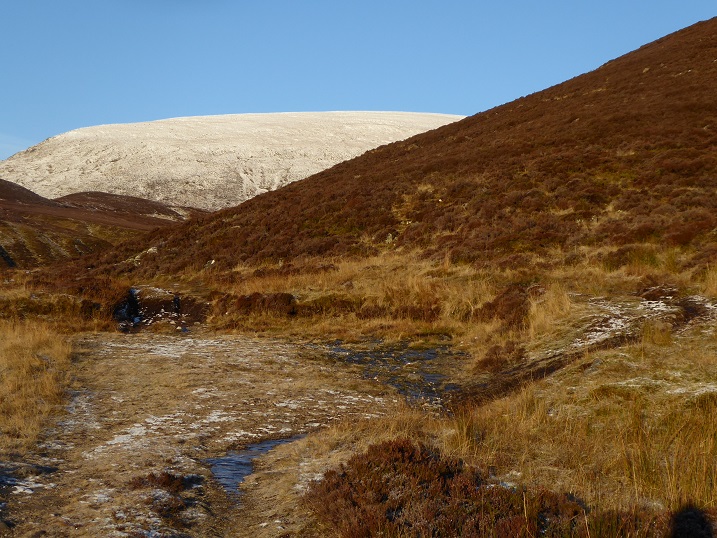
The damage starts at the end of the road, from where estate staff, recreational deer stalkers and grouse moor shooters presumably used to walk. It now forms the staring point for All Terrain Vehicles to travel out across the moor and hillsides.
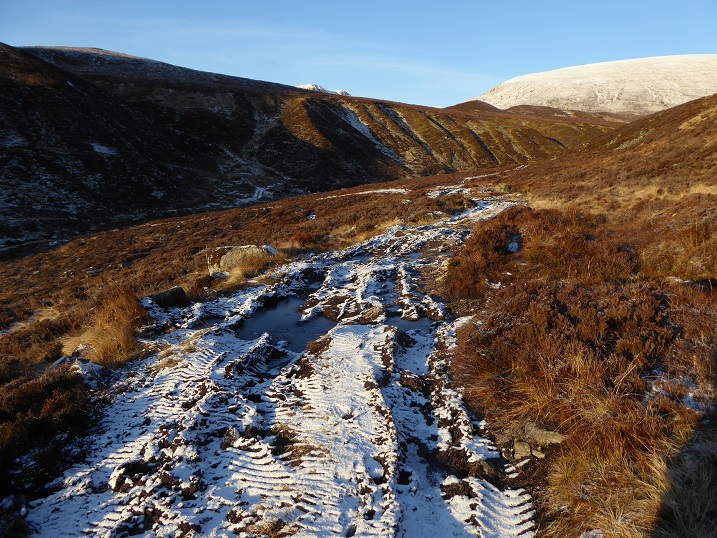
Under the EU Habitats Directive, Scotland was to required protect a percentage of its most important habitats.
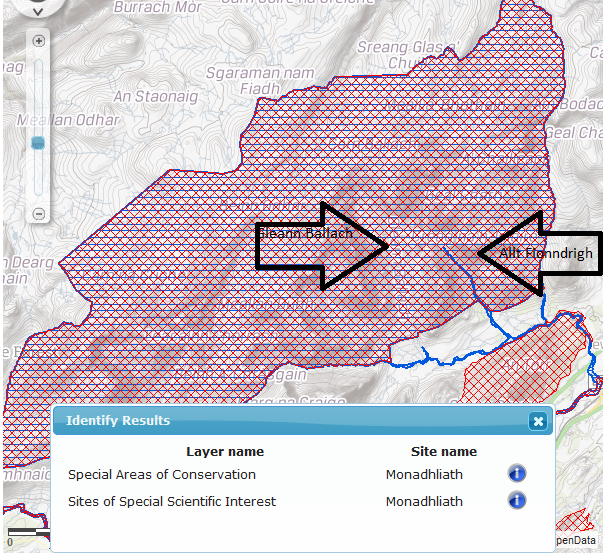
Part of the Monadliath had been designed as a Site of Special Scientific Interest in the 1970s and this was then selected as a Special Area of Conservation under the Habitats Directive. The whole of the hill road by the Allt Fionndrigh and almost the whole of Gleann Ballach lies within the SSSI and SAC.
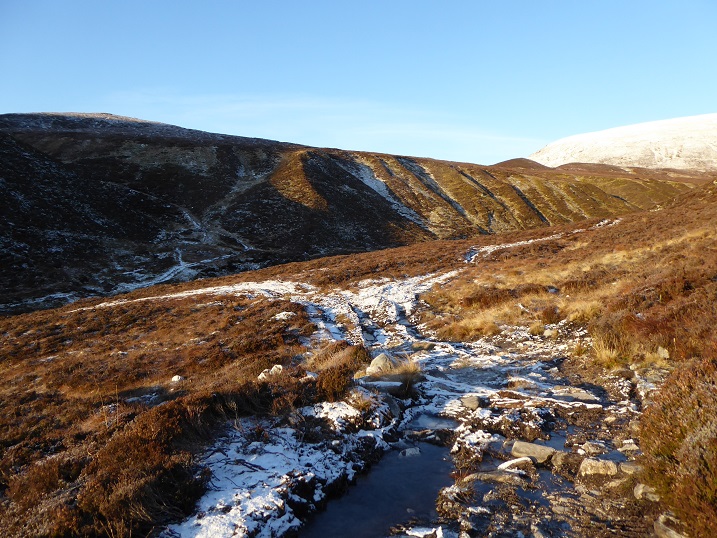
Land requiring therefore the highest level of protection. The reason for designating this part of the Monadhliath as a SAC was because of its blanket bog – yet that bog is being churned up by vehicles, destroying vegetation, eroding the peat and releasing carbon into the atmosphere.
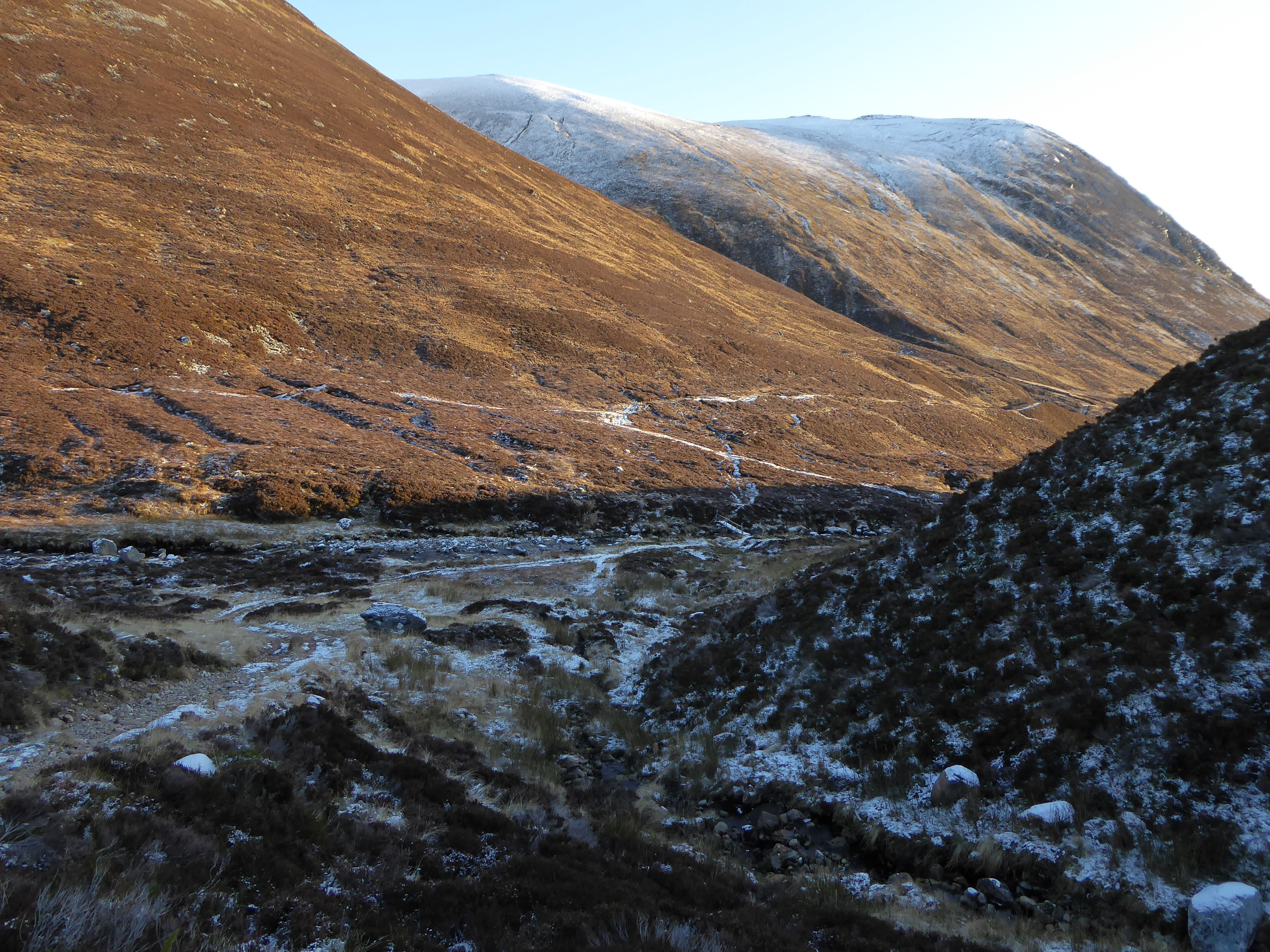
The Prior Notification last year proposed replacing the footbridge over the Allt Fionndrigh with a vehicle bridge and proposed creating a permanent road here to reduce the damage.
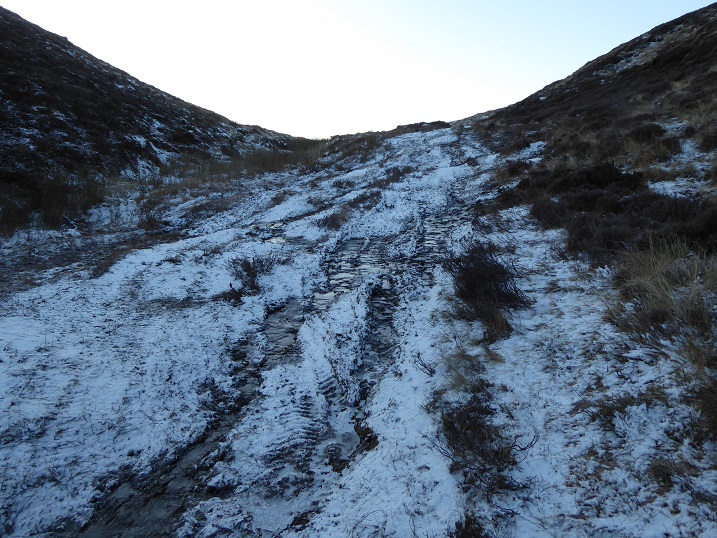
In my view creating a permanent road here would, however, only compound the damage. Roads affect drainage and therefore the whole hydrology of the peat bog. Those impacts would be particularly acute in the section pictured above where a road would serve to drain the blanket bog above even more than the ATV tracks are doing at present. (Any direct road up the slope would also be highly prone to erosion because its so steep while a zig zag route which would increase the area of protected land damaged and have a large visual impact).
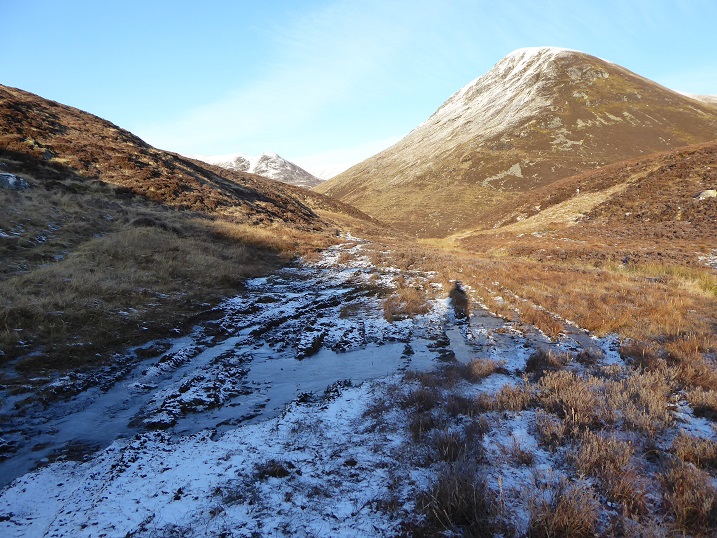
So why is this damage to the blanket bog taking place and why has it been allowed to happen?
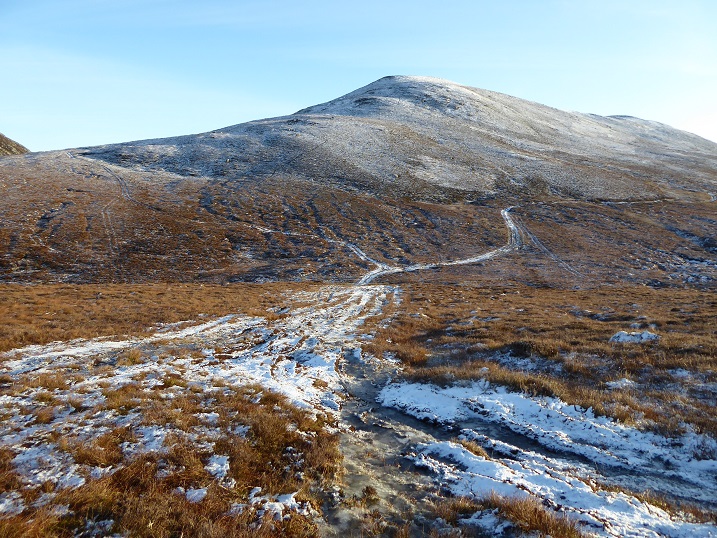
Its not clear if these tracks are being used for “predator control”. We saw no sign of traps on the entire walk, which does not mean that predator control is not taking place. Unfortunately its very difficult for the public to know what is going on as there is no requirement under the General License, which allows “control” of “vermin”, for landowners to report how many species like crows and stoats they are killing – even in our National Parks.
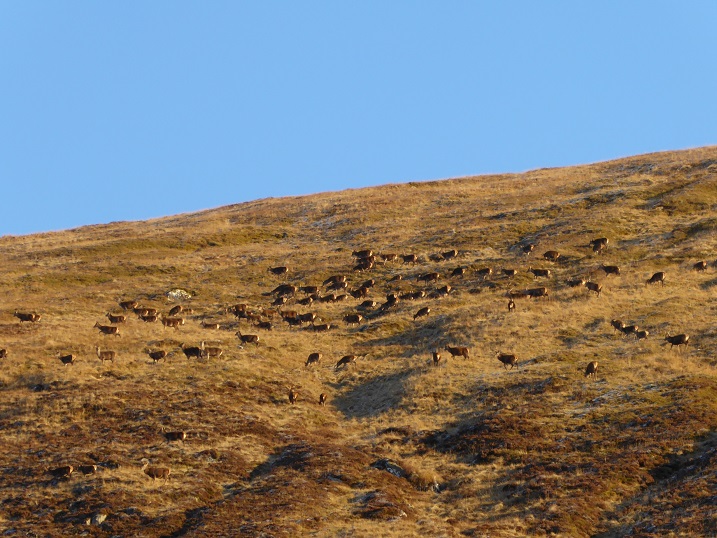
Its possible that ATVs are being used for deer stalking. One justification for ATV use is that it enables estates to bring deer, which can cause considerable damage to blanket bog, down off the hill. If that is part of the explanation here, judging by the number of deer we saw, this has been remarkably ineffective.
It would, in any case, be much more effective if deer culling, as opposed to “recreational stalking”, took place when deer were driven off the hill by bad weather. For stags that would be facilitated if the stalking season were extended beyond 20th October.
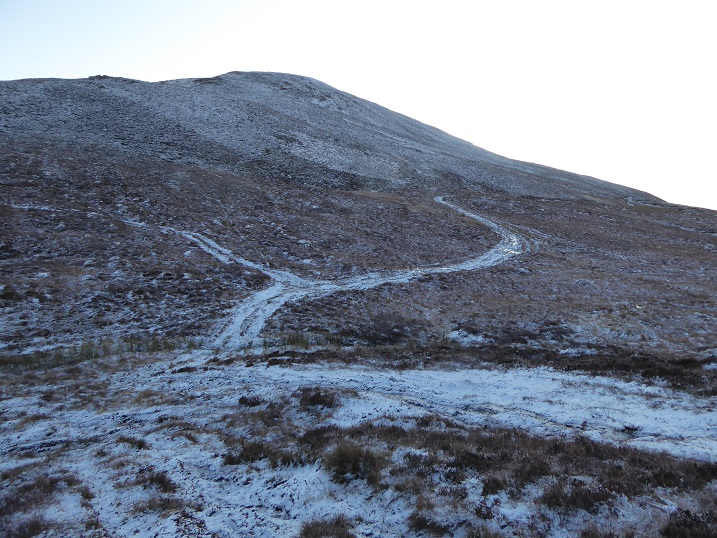
Are these tracks for deer control, grouse moor management or both?
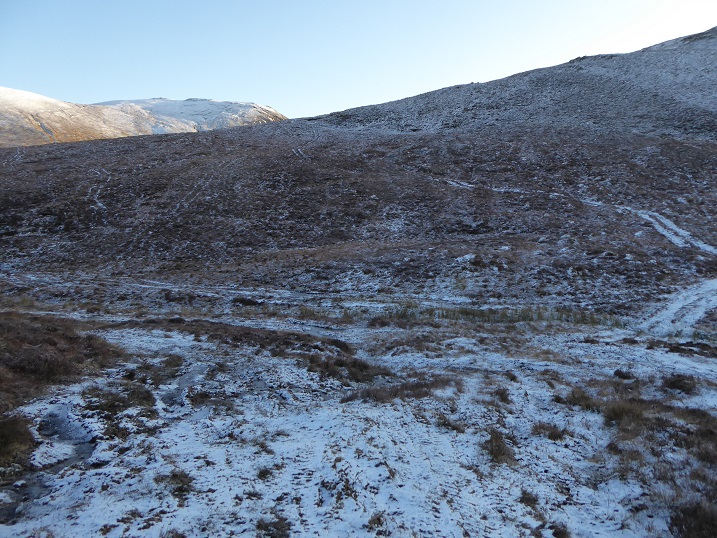
We walked along the largest of the ATV tracks towards the munro Carn Dearg
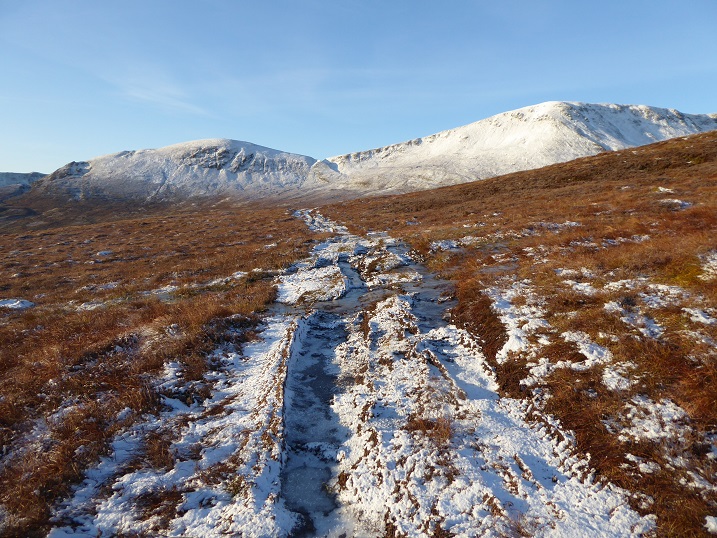 This section of track was not included in Prior Notification 18_04974 for an upgrade but has clearly also created significant damage to the blanket bog. Estates at present can pick and choose what ATV tracks they wish to “upgrade” and this makes it easier for them to play the system and get planning consent for new roads. Meantime the planners cannot take action against these ATV tracks because unless they are constructed in some way they don’t count as a development and therefore don’t come under the planning system.
This section of track was not included in Prior Notification 18_04974 for an upgrade but has clearly also created significant damage to the blanket bog. Estates at present can pick and choose what ATV tracks they wish to “upgrade” and this makes it easier for them to play the system and get planning consent for new roads. Meantime the planners cannot take action against these ATV tracks because unless they are constructed in some way they don’t count as a development and therefore don’t come under the planning system.
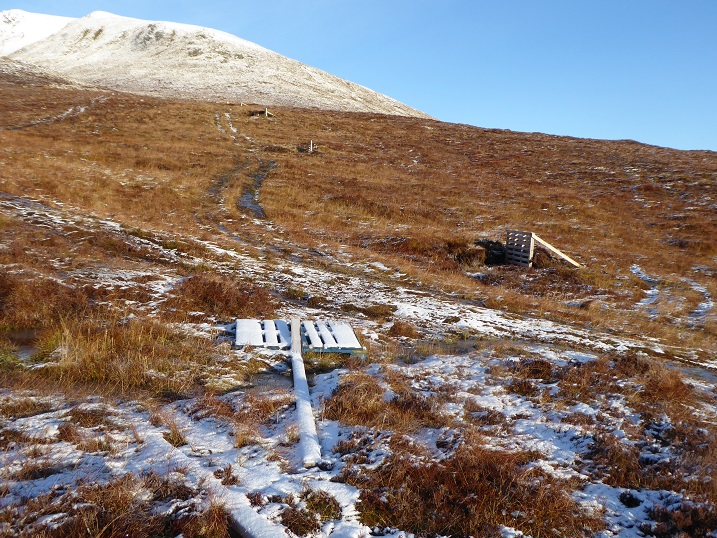
The ATV track came to an end in the area around a line of grouse butts on the slopes of Meall na Ceardach, on the eastern side of Gleann Ballach. It would appear the main purpose of this track, which extends for about 1500m from the col, is for driven grouse shooting. Does the private pleasure gained by Abdul Majid Jaffar and his guests, paying or not, from driving here to shoot grouse justify the damage to the blanket bog? Why couldn’t they walk as we did?
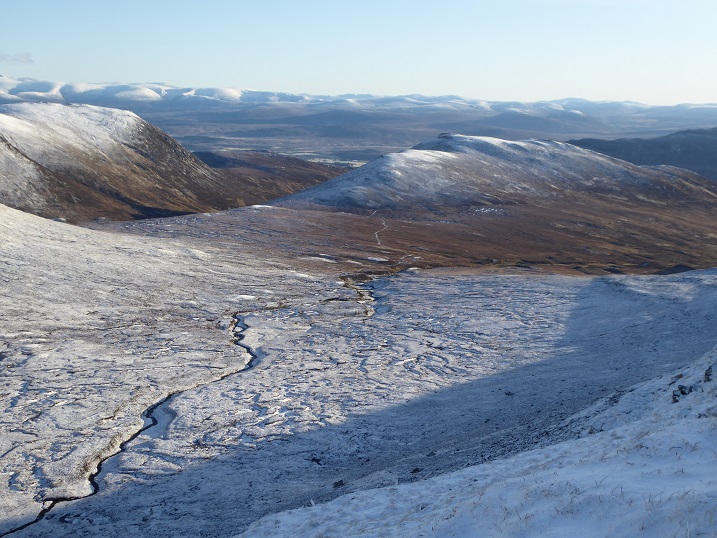
While these ATV tracks fall outwith the Planning system Scottish Natural Heritage, which is responsible for protecting SACs and SSSIs can specify operations requiring consent. Among those listed for the Monadhliath SSSI are:
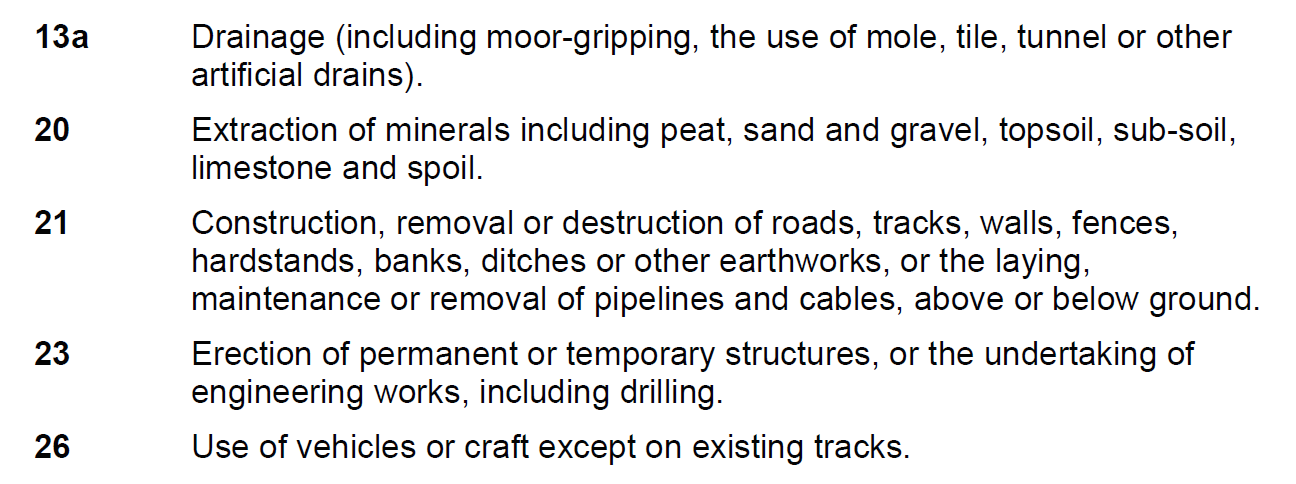 So has SNH consented to the use of vehicles here and to construction of grouse butts out of pallets?
So has SNH consented to the use of vehicles here and to construction of grouse butts out of pallets?
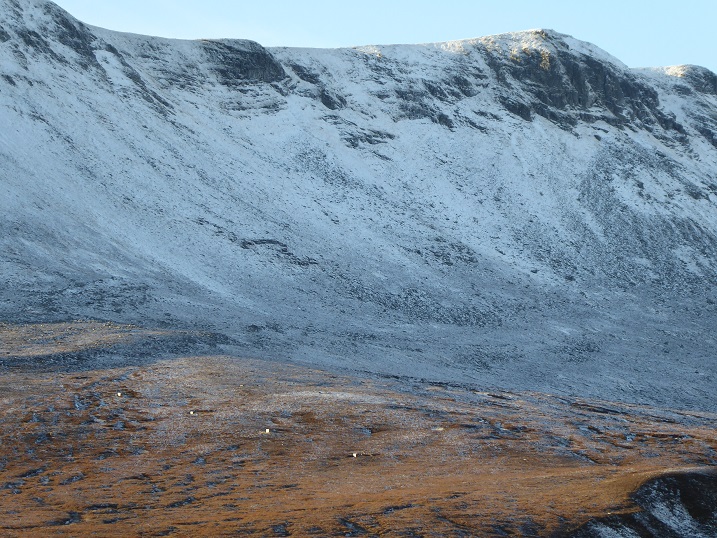 Have SNH too consented to these grouse butts on the west side of Gleann Ballach which, judging by the lack of any significant connecting track, appear to be recent? The consequence of these butts will predictably be that the ATV eroded track network leading out from the road along the Allt Fionndrigh will extend even further.
Have SNH too consented to these grouse butts on the west side of Gleann Ballach which, judging by the lack of any significant connecting track, appear to be recent? The consequence of these butts will predictably be that the ATV eroded track network leading out from the road along the Allt Fionndrigh will extend even further.
Unfortunately, its not possible to find out easily what SNH has consented to and what not because this is not shown on SNH’s sitelink database which provides information on SSSIs and SACs (see here). One wonders if SNH’s Board and senior management have any idea of how much damage is being to blanket bog on grouse moors due to ATV use?
Whatever SNH’s role in Gleann Ballach, I don’t want to criticise the frontline staff involved because they have been subjected to enormous cuts by the Scottish Government – 40% as the Ferret revealed this week (see here). They have an impossible job with very little backing from senior management – when did SNH last take enforcement action to remedy damage to Special Areas of Conservation?
SNH, just like our National Park Authorities, has been effectively forced by the Scottish Government to resort to trying to persuade landowners voluntarily to do the right thing. This has resulted in the ludicrous situation where SNH, while allowing the damage here to take place, appears to be PAYING the multimillionaire owner of the Pitmain/Glen Banchor to restore areas of damaged peatbog on other parts of the estate . Just on Saturday the Herald reported that the Pitmain Estate is part of the 3,700 acre peatland restoration project for the Monadhliath (see here). Grouse moor owners used the article to claim that:
“Grouse moors act as huge carbon stores and pro-active management practices help support active peat bogs rich in wildlife.”
The truth is that those proactive grouse moor management practices are destroying peatbog, as is evidenced by the photos here. Does SNH or the Scottish Government know – or even care – about how much peat bog is being damaged by uncontrolled ATV use and the construction of new roads compared to that which has been restored by “Peatland Action”? The grouse moor owners are not only using SNH and the Scottish Government but they are laughing all the way to the bank.
What needs to happen
What’s happening on the Glen Banchor and Pitmain estates shows the Scottish Government and SNH should stop wasting public money and require that ANY landowner receiving public money for peatbog restoration, whether in a protected area or not, enters a legally binding agreement to prevent any further damage to peatbogs on their properties. That should include an end to the current practice of driving ATVs across peatbogs. Such common sense requirements used to be known as “cross-compliance” before neo-liberal dogma removed effective regulation over land-use. We need to go back to the good old days of the 1970s.
The Cairngorms National Park Authority and SNH also, however, need to work better together and use their existing powers to stop the proliferation of hill roads and damage by ATVs across the National Park. As part of this SNH should review how its using its powers to protect designated areas and what resources would be needed to do this effectively. At the same time the CNPA should be looking at how it could use its conservation byelaw making powers to control ATV use and whether it could attach legal agreements to any new tracks preventing them from acting as a “launch pad” for further ATV use and destruction.
The success or otherwise of Revive will do much to determine whether changes like this take place. Its a campaign deserving of support from all who care about our National Parks and the great oudoors more generally.
You’ve shown a glaring example, Nick, of the environmental damage being carried out on one estate – some great evidence. Of course this is happening in numerous estates all over Scotland. This article also provides further evidence of how ineffectual SNH has become. The manpower cuts will have contributed, but as you say it appears that there is also a lack of management will. Maybe some FOIs are necessary to understand how little SNH is doing to protect habitats all over Scotland.
The real problem lies with Cabinet Secretary Fergus Ewing and the Scottish Government. He claims that in the past he was a Munro bagger. It’s about time he got back into the mountains himself to see the proliferation of damage to our mountain habitats. The key problem is however that he and the Scottish Government see all this damage as economic development, and of course the environment cannot stand in the way of ‘progress’!! Meanwhile, as you point out, the Government pays these landowners to repair damage to peatland – which smacks of being a token gesture to environmental protection, using public money pf course, whilst turning a blind eye to the current damage being done. To use the well worn metaphor – fiddling while Rome burns.